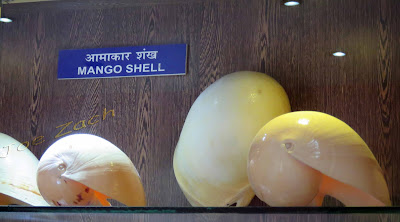Even though we were in the Andamans right in the middle of monsoon,
we were lucky enough to get abundant sunshine throughout the week (with
intermittent rain in the night)
The early morning view from our window was just magnificent.
There was this little bird who always took his morning walk religiously.
I noticed that he was very shy and scooted off at the slightest sound of anyone
approaching.
Left Port Blair to see the Baratang limestone caves. But the
interesting part is how you reach there. After an hour’s drive from Port Blair,
there is a check point where all the vehicles have to stop. As we are entering
the Jarawa territory all vehicles will have to move in a convoy. The convoy
proceed at fixed times with a periodic interval of 3 hrs. (only during day time)
We were all set for the 9.00 am convoy.
All have to carry photo ids and a detailed form has to be filled up
with the detail of passenger in each car. While that was being done by our
driver we had real hot puri bhaji at these stalls
While writing this blog, I did some reading on the Jarawa.
Some
interesting facts:
They left Africa 70000 years ago. The most ancient people in the
world.
The existence of the Jarawa has been recorded in the diaries of Lt
Col Broke (1789-90) and Blair (1889-96)
Originally not as hostile towards the settlements, the Jarawa became
aggressive when the British befriended the other tribes, apparently their
enemies.
The Jarawas underwent another phase of unequal conflict with the
outsiders, when during the period of Japanese occupation from 1942-45 their
areas were bombed from the air.
Between 1946 and 1961 there were 76 encounters with the Jarawa in
which 15 settlers and “many” Jarawa were killed.
The next phase started in the 1960s with the laying of the Andaman
Trunk road through the Jarawa territory began. The tribals resisted the project
from the beginning and the government was adamant to get it done. There were
skirmishes and ambushes and no one knows the number of casualties on both
sides.
Here is a picture of the Jarawa exhibited at the Naval Marine Museum.
Here is a picture of the Jarawa exhibited at the Naval Marine Museum.
One evening a Jarawa boy called ‘Enmey’ fell into a ditch while
collecting bananas from a village house in Kadamtala area adjacent to the
Jarawa reserve. The boy was injured and rescued by the local police. He was
sent to Port Blair for treatment. During his convalescence, he became friendly
with the doctors, nurses and the attendants. He started taking cooked food and
even picked up a few words in Hindi. The anthropologists and the tribal welfare
department dealing with the Jarawa also interacted with the boy and gradually a
good rapport developed between the boy and them. The Jarawa community was full
of gratitude when he finally rejoined them. This helped in furthering contacts
with the whole Jarawa community. Though the Jarawa continued to remain aloof
they have, over time, come to accept the presence of civilized world in their
reserve as non threatening and also allow occasional interaction with the
officials of Andaman and Nicobar administration. In the photograph, Enmey is
seen posing proudly with his family.
As photography was strictly prohibited, I did not click till we
reached the other end. But it was a wonderful drive through the tropical rain forest
of Jarawa land. We did see a few young Jarawa boys on the way in the morning.
On our return trip in the evening we saw more of them especially one extended
family standing at the side of the road. In a way I felt sad as it looked as if
they were expecting something, maybe some gift or food from the passerby. Maybe
that was happening on a daily basis as the escort (police) was only at the
start and end of the convoy. Here is a video on YouTube by Alexandre Dereims which will give you
some idea of Jarawa and what they have to say.
This two hour drive gets you to a place called Middle Straight where
a government ferry takes you across to Baratang. While on the ferry you can
take in the lovely greenery just kissing the waters.
From there you hire a speed boat which takes you to Baratang
limestone caves. Again the identity card, paper works etc. (it costs Rs 450/-
per head for the speedboat) We were in the boat named Sanjana
The outboard really zips you through the mangrove forests. We did see
an alligator basking in the sun but the boat was too fast for me to click. As
you near your destination the boat slows down and you wind your way through the
smaller lanes of the mangroves. It’s a wonderful sight and one is reminded
about the movie “Black Water”
Some information regarding the roots
You get off the speed boat near the mangroves and walk. It’s a good
trek for about 2 kms with tall trees and lush greenery all around you.
If you slow down the pace and look closely you can see some finer
things like a cobweb or the tiny leaves growing on the stones.
The path twists and turns till you reach the limestone caves.
You get to see more stalactites than stalagmites. It is a good place
for people who are interested in geology.
I would advice tourists visiting the caves to carry a powerful torch.
Walking shoes is an added advantage for the trek.
Have made a six minute video on the journey.
Like I said before, travelling to the place is more fun than the caves (especially when passing through Jarawa territory)



















































